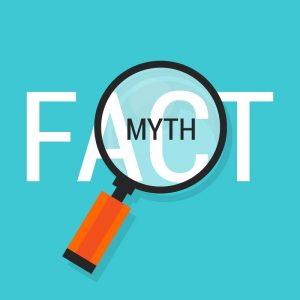0
You have 0 items in your cart

Every animal on earth — mammals, reptiles, fish, amphibians, birds — has a brain. But the human brain seems to be the most interesting. Even though it’s not the biggest, it is the most complex organ. It gives us the power to think, speak, and solve problems. It’s truly an incredible organ.

It performs several functions including:
Every animal on earth — mammals, reptiles, fish, amphibians, birds — has a brain. But the human brain seems to be the most interesting. Even though it’s not the biggest, it is the most complex organ. It gives us the power to think, speak, and solve problems. It’s truly an incredible organ.
The brain is wider than the sky

According to Scott Huetel, a researcher at Duke University, the standard answer to this question is the fact that the human brain is one of the least understood things in the universe. While this is correct, Huetel says that this idea is still incomplete. According to him, the real problem in brain science is one that he calls “navel gazing”. This is because no scientist can step outside of their own brain when studying the brain.
This article will start with the basics then give you an overview of the brain.
We’ll start by examining how the brain works so that we can determine whether we only use 10% of our brains.
Let’s delve right in:
Did you know that the human brain is made up of about 100 billion nerve cells known as neurons? The primary function of neurons is to gather as well as transmit electrochemical signals. We can compare this to the wires and gates in a computer.
To understand how the brain works, we need first to learn how neurons function:
Basically speaking, neurons have the same characteristics and same genetic makeup as other cells in the human body. But what makes them transmit signals over long distances is the mere fact that they possess electrochemical spaces.
Every neurone has three parts:
Neurons come in different shapes and sizes depending on their function. For instance, one sensory neuron from the fingertip has an axon that extends all the way to the end of the arm, while a neuron found in the brain can have an axon extending only a few millimeters.
Neurons also vary with their functions: Sensory neurons transmit signals from your body all the way to your central nervous system; motor neurons carry signals and transmit information all the way from your central nervous system to other parts of your body; while interneurons connect many neurons in the spinal cord and the brain.
My Brain doesn’t like to be quiet.

The ten-percent myth is a popular legend that people use only 10 percent of their brain. In fact, it has been miscredited to many people, including Albert Einstein.
First off, you need to ask yourself this question — 10% of what? If it is 10% of the regions of the brain that we use, this is the easiest idea to squash. Neuroscientists have placed people inside scanners to see which parts of their brains are functioning when they think or do something. A simple action such as sitting and standing requires activity in far more than just a tenth of the brain. Even when you just speak, your brain is doing a lot.
 But maybe 10 percent refers to the number of brain cells. Again, this is easy to disapprove. When nerve cells wear out, they either degenerate or die and are colonised by other cells. We simply don’t let our brain cells sit there doing nothing. They are far too valuable to sit idle. In fact, the brain drains an enormous amount of our resources. It consumes 20% of the oxygen we breathe, according to neuroscientist Sergio Della.
But maybe 10 percent refers to the number of brain cells. Again, this is easy to disapprove. When nerve cells wear out, they either degenerate or die and are colonised by other cells. We simply don’t let our brain cells sit there doing nothing. They are far too valuable to sit idle. In fact, the brain drains an enormous amount of our resources. It consumes 20% of the oxygen we breathe, according to neuroscientist Sergio Della.
Yet many people still cling to the theory that humans only use 10% of the brain. This idea has become so prevalent to the extent that when neuroscientist Sophie Scott was on a first aid course, her instructor guaranteed the students that head injuries could not be so severe because “90 percent of the brain [doesn’t] do anything”. He was not only wrong about the 10 percent myth, but also about the effects of brain damage. Even the smallest of brain injuries can have adverse effects on a person’s capabilities.
So how can an idea with very little biological or physiological justification spread so widely? Tracing its source is hard. Perhaps it was all started by William James, an American psychologist who mentioned in the Energies of Men in 1908 that humans are making use of only a small portion of their mental and physical resources. Or was it Dale Carnegie in his best-selling book How to Win Friends and Influence People. Better yet, it could be Albert Einstein that started it.
 Two theories might account for this misunderstanding. 90% of the brain cells are non-neuron cells. These are the white matter, support cells that provide physical and nutritional support for the other 10 percent of cells, the neurons, which make up the gray matter. So, most probably, people heard about that only 10 percent of cells do all the hard work and assumed that we could believe that we use a tenth of the brain’s capacity. The reality, however, is that these are different cells entirely. There is no way they could ever transform into neurons.
Two theories might account for this misunderstanding. 90% of the brain cells are non-neuron cells. These are the white matter, support cells that provide physical and nutritional support for the other 10 percent of cells, the neurons, which make up the gray matter. So, most probably, people heard about that only 10 percent of cells do all the hard work and assumed that we could believe that we use a tenth of the brain’s capacity. The reality, however, is that these are different cells entirely. There is no way they could ever transform into neurons.
A British pediatrician known as John Lorber conducted a study to a group of patients in 1980. He discovered that their brain cells revealed something really intriguing. His patients had hydrocephalus, which means they had hardly any brain tissue, yet their brains still worked. This study showed that the brain could work even when it had no tissue. But this is not to say that every other person can make additional use of their brain. The truth is; these people had adapted to their circumstances.
 This means that if we put our minds to learn something new, our brain changes. In fact, there is increasing evidence from the area of neuroplasticity to back up this theory. But this doesn’t mean that we are harnessing a new area of the brain that was not in use before. We only make connections to new nerve cells and lose old connections to nerve cells that we no longer need.
This means that if we put our minds to learn something new, our brain changes. In fact, there is increasing evidence from the area of neuroplasticity to back up this theory. But this doesn’t mean that we are harnessing a new area of the brain that was not in use before. We only make connections to new nerve cells and lose old connections to nerve cells that we no longer need.
The most widely-held lure of this myth is the false idea that we can develop psychic abilities by improving our memory. In fact, many people get disappointed when they hear that the 10% myth isn’t true. Perhaps this 10 percent figure is so appalling to them because it is too low and therefore offers a lot of room for improvement. We would all love to be better. And we can, in fact, be better if we try. But unfortunately, this doesn’t involve harnessing an unused part of the human brain.
 The false idea that we use 10 percent of the brain has been there since the 1900s. Not long ago, a magazine belonging to theU.S Satellite showed a simple drawing of a human brain. Below it was writing “You only use a tenth of your brain.” Another reason why the myth has persisted is the fact that it is now being used by psychics and paranormal dealers to explain the origin of their supernatural powers. They usually tell their audience that humans only use 10% of their brain and if scientists don’t know what to do with the remaining 90 percent, then it must be utilized for psychic powers.
The false idea that we use 10 percent of the brain has been there since the 1900s. Not long ago, a magazine belonging to theU.S Satellite showed a simple drawing of a human brain. Below it was writing “You only use a tenth of your brain.” Another reason why the myth has persisted is the fact that it is now being used by psychics and paranormal dealers to explain the origin of their supernatural powers. They usually tell their audience that humans only use 10% of their brain and if scientists don’t know what to do with the remaining 90 percent, then it must be utilized for psychic powers.
In fact, an author Michael Clark in his book A Practical Guide to Psychic Phenomena mentions Craig Karges, a man who charges a substantial amount of money to give out his intuitive program designed to help people develop psychic abilities. Clark argues that because we only use 10 to 20% of the brain, how different would life be if we tapped into the other 80-90 percent?
Regardless of the origin of the myth, it has been spread repeatedly, both by the educated and the intentionally deceptive. It now remains false — a belief that is not backed by evidence, but it is assumed to be real due to its constant repetition. People who don’t know better will continue to repeat it again and again, just like the myth that it is wrong to swim immediately after you eat.

Neuroscientists point out several reasons why the ten percent myth is not true:
Researchers at the University of California found our that the working memory remains intact even if the brain structures such as the hippocampus are damaged.
 The working memory is the mental ability of the brain to hold small amounts of information for a short period, usually a few seconds to a few minutes. On the other hand, long-term memory involves storing an unlimited amount of information for a potentially definite time.
The working memory is the mental ability of the brain to hold small amounts of information for a short period, usually a few seconds to a few minutes. On the other hand, long-term memory involves storing an unlimited amount of information for a potentially definite time.
The researchers went on to examine four memory-impaired patients who had sustained damage to their medial temporal lobes, a region of the cerebral cortex containing the hippocampus and responsible for long-term memory formation.
The patients were asked to briefly study an arrangement of objects on the surface of a table. They were then required to reproduce the objects relative positions on another table. The scientists discovered that when the number of objects was three or less, the subjects could easily recall them. Again, the subjects easily remembered the objects when they were placed next to each other.
 But their performance unluckily collapsed when they reached the limit of their working memory. They couldn’t remember the location of the objects when there were four or more of them. This is because storing a larger amount of information involved tapping into their long-term memory functions.
But their performance unluckily collapsed when they reached the limit of their working memory. They couldn’t remember the location of the objects when there were four or more of them. This is because storing a larger amount of information involved tapping into their long-term memory functions.
These findings provide substantial evidence for a clear distinction between the working memory and long-term memory, even in the reality of spatial objects as well as spatial information. This theory can be backed by both practical and clinical studies.
It shows that patients with memory impairment caused by brain damage, including early Alzheimer’s disease, have smaller difficulty than what we may have thought before. They have full ability to hold information in their minds and ability to work on a short-term basis.
Now, it is time we put this myth behind. Even if it has lived a whole century so far, we shouldn’t allow it to live on into another century. Maybe one of the best ways to combat this myth is to tell anyone, when the legend is mentioned, “Oh, really? What is the exact part of your brain don’t you use?”
Mastering others is STRENGTH; mastering yourself is TRUE LOVE
This Privacy Policy describes how SmartMinds Enterprise OÜ (“SmartMinds”, “we”, “us” or “our”) handles information about yourself that you may provide us with through your use of the Site or Service (“Personal Information”) and should be read along with our Terms of Use posted here, and all other operating rules and additional terms and conditions published on our Site.
SmartMinds is committed to keeping your information secure and managing it in accordance with our legal responsibilities under privacy and data protection laws where we operate. SmartMinds uses your Personal Information only in accordance with this Privacy Policy and Applicable Law. SmartMinds does not sell your Personal Information to third parties. Any capitalized terms not defined in this Privacy Policy are defined in the Terms of Use.
We employ the use of cookies. By using SmartMinds‘s website you consent to the use of cookies in accordance with SmartMinds’s privacy policy.
Most of the modern day interactive web sites use cookies to enable us to retrieve user details for each visit. Cookies are used in some areas of our site to enable the functionality of this area and ease of use for those people visiting. Some of our affiliate / advertising partners may also use cookies.
Unless otherwise stated, SmartMinds and/or it’s licensors own the intellectual property rights for all material on SmartMinds All intellectual property rights are reserved. You may view and/or print pages from https://smartminds.stagings.one for your own personal use subject to restrictions set in these terms and conditions.
You must not:
We will approve link requests from these organisations if we determine that: (a) the link would not reflect unfavourably on us or our accredited businesses (for example, trade associations or other organisations representing inherently suspect types of business, such as work-at-home opportunities, shall not be allowed to link); (b)the organisation does not have an unsatisfactory record with us; (c) the benefit to us from the visibility associated with the hyperlink outweighs the absence of SmartMinds; and (d) where the link is in the context of general resource information or is otherwise consistent with editorial content in a newsletter or similar product furthering the mission of the organisation.
These organisations may link to our home page, to publications or to other Web site information so long as the link: (a) is not in any way misleading; (b) does not falsely imply sponsorship, endorsement or approval of the linking party and its products or services; and (c) fits within the context of the linking party’s site.
If you are among the organizations listed in paragraph 2 above and are interested in linking to our website, you must notify us by sending an e-mail to Please include your name, your organisation name, contact information (such as a phone number and/or e-mail address) as well as the URL of your site, a list of any URLs from which you intend to link to our Web site, and a list of the URL(s) on our site to which you would like to link. Allow 2-3 weeks for a response.
Approved organizations may hyperlink to our Web site as follows:
No use of (name)’s logo or other artwork will be allowed for linking absent a trademark license agreement.
Without prior approval and express written permission, you may not create frames around our Web pages or use other techniques that alter in any way the visual presentation or appearance of our Web site.
We shall have no responsibility or liability for any content appearing on your Web site. You agree to indemnify and defend us against all claims arising out of or based upon your Website. No link(s) may appear on any page on your Web site or within any context containing content or materials that may be interpreted as libelous, obscene or criminal, or which infringes, otherwise violates, or advocates the infringement or other violation of, any third party rights.
We reserve the right at any time and in its sole discretion to request that you remove all links or any particular link to our Web site. You agree to immediately remove all links to our Web site upon such request. We also reserve the right to amend these terms and conditions and its linking policy at any time. By continuing to link to our Web site, you agree to be bound to and abide by these linking terms and conditions.
If you find any link on our Web site or any linked web site objectionable for any reason, you may contact us about this. We will consider requests to remove links but will have no obligation to do so or to respond directly to you.
Whilst we endeavour to ensure that the information on this website is correct, we do not warrant its completeness or accuracy; nor do we commit to ensuring that the website remains available or that the material on the website is kept up to date.
We have a 30-day Money Back Guarantee when purchasing Realized Mind, all we ask if that within the 30 days to complete the learning experience and if you truly feel you did not receive any value from the experience we are happy to refund your payment and close your account.
To the maximum extent permitted by applicable law, we exclude all representations, warranties and conditions relating to our website and the use of this website (including, without limitation, any warranties implied by law in respect of satisfactory quality, fitness for purpose and/or the use of reasonable care and skill). Nothing in this disclaimer will:
The limitations and exclusions of liability set out in this Section and elsewhere in this disclaimer: (a) are subject to the preceding paragraph; and (b) govern all liabilities arising under the disclaimer or in relation to the subject matter of this disclaimer, including liabilities arising in contract, in tort (including negligence) and for breach of statutory duty.
To the extent that the website and the information and services on the website are provided free of charge, we will not be liable for any loss or damage of any nature.
